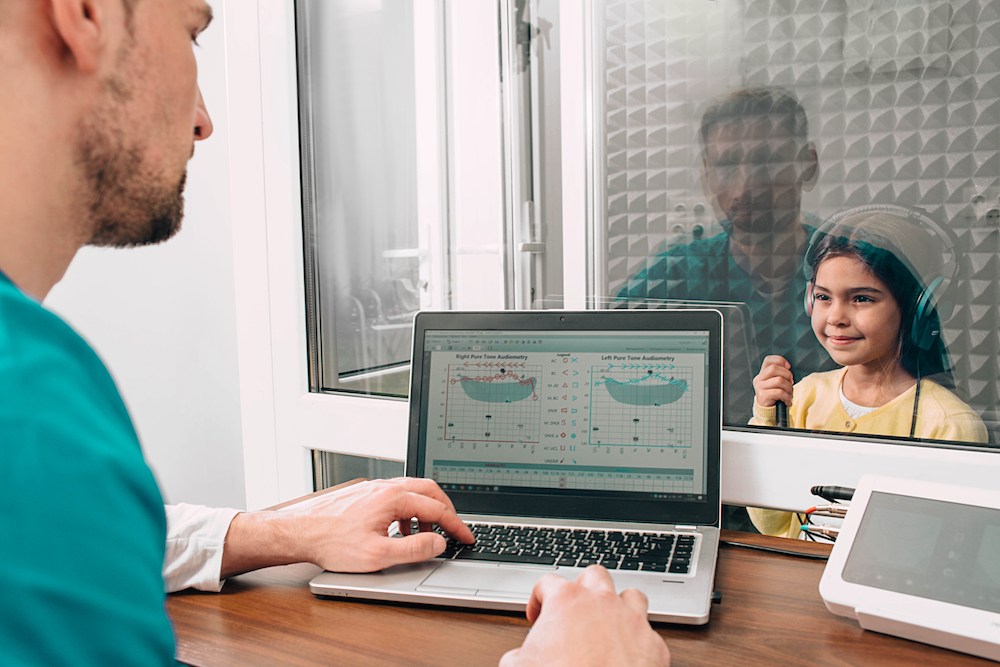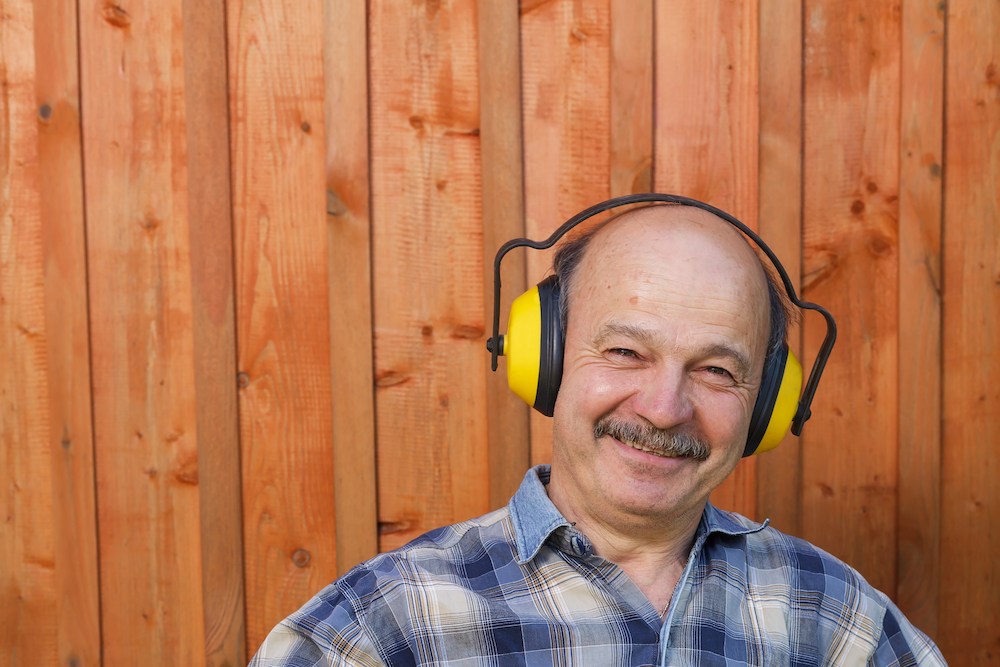How to Protect Your Hearing During the Fall Season
Fall brings seasonal changes to your routine and activities that can
We’ve moved to our new permanent location! Learn More

By: admin | September 24, 2025
The way hearing care is viewed is gradually shifting. In the past, many people waited until their hearing problems became difficult to ignore before seeking help, but that pattern is beginning to change. There is now more attention on maintaining hearing health early on, in much the same way people monitor their eyesight or dental health. This shift is supported by growing research showing how hearing influences overall health and quality of life, along with advances in technology that make it easier to track and manage hearing over time.
At the same time, hearing care is becoming more responsive to individual needs and preferences. Instead of a uniform approach, there are now more choices designed to fit different lifestyles and routines. Some people prefer the structure of in-person visits with a hearing instrument specialist, while others look for the convenience of remote support or a combination of both. The result is a more flexible system that allows people to access care in ways that align with their budget, schedule and personal circumstances, rather than being limited to one standard model.
Hearing care matters because it goes beyond simply improving how well someone can hear. It plays a direct role in supporting communication, relationships and overall quality of life. When hearing changes are left unaddressed, people may find it harder to stay engaged at work, in school or in social settings. Over time, this can lead to missed opportunities and reduced confidence in everyday interactions. By taking steps to care for hearing early, individuals can stay more connected and maintain a stronger sense of independence.
As new trends in hearing care continue to develop, the importance of addressing hearing health becomes even clearer. Advances in technology are making it easier to personalize solutions, giving people tools that fit more naturally into their routines. Beyond devices, there is also a growing focus on understanding the broader impact of hearing on overall well-being, from cognitive health to emotional resilience. Recognizing why hearing care matters today helps prepare us to embrace these future developments and make the most of the opportunities they bring.
Recent advancements have made hearing care more tailored and effective. Hearing aids now use artificial intelligence to adjust sound in real time, which helps you hear better in noisy environments. Real-ear measurements are performed more quickly and accurately, ensuring your devices fit your unique needs. Many hearing aids now include features like fall detection, health tracking and language translation. Bluetooth connectivity allows you to stream calls or music directly to your hearing aids, providing clearer sound. These developments enable a hearing specialist to offer solutions that fit seamlessly into your daily life and support your overall well-being. With new tools to track progress, you and your hearing specialist can monitor how well your devices are working over time.
Artificial intelligence is now a key part of many hearing devices, offering automatic adjustments to different environments. Whether you are at home, in a busy store or outdoors, AI-powered hearing aids can help you hear speech more clearly. These features also include added safety options like fall detection. Understanding how artificial intelligence works in your devices can help you make the most of these advancements and choose options that support your communication and well-being.
Speech in noise testing is becoming an important part of how hearing care is moving forward. Unlike traditional hearing tests that measure your ability to detect tones in a quiet environment, this approach looks at how you manage sound in more realistic settings. Everyday life is rarely silent, and many people with hearing difficulties notice challenges most when there are competing voices or background sounds. By understanding how the brain and ears work together in these situations, hearing specialists can recommend options that go beyond simply amplifying sound.
This type of testing also highlights the growing shift in hearing care toward solutions that focus on comfort and clarity in daily life. As technology continues to advance, hearing aids and assistive devices are being designed to respond more effectively in noisy environments. Pairing these innovations with results from speech in noise testing allows for more personalized recommendations and adjustments. Looking ahead, this trend represents a more practical approach to hearing health, one that recognizes the real challenges people face and provides tools to improve communication in the environments that matter most.
Remote care and telehealth have made it easier to access hearing services without always needing to visit a clinic in person. Virtual appointments allow you to discuss concerns, receive advice or have your hearing aids adjusted online. This is especially helpful if travel is difficult or you live far from a clinic. Remote care also enables quicker follow-ups and ongoing support, helping you keep your devices working well with less effort.
Improved measurement tools are making hearing support more accurate and personal. Real-ear measurements allow hearing specialists to check how well your hearing aids match your specific needs, resulting in clearer sound and greater comfort. Outcome measures, like simple questionnaires, help track how well your hearing aids perform in daily situations. These tools provide a clear picture of what is working and what may need adjustment.
Real ear measurements help your hearing specialist ensure your hearing aids are set up precisely for your ears. This process checks how sound from the device reaches your eardrum, which varies from person to person. Benefits include a more accurate fit, better sound quality and greater comfort. Adjustments can be made quickly if needed. While the process may take a little extra time during your appointment, it leads to better results. Personalized support ensures that technology meets your individual needs and helps you communicate more easily in the places that matter most.
Modern hearing devices now offer features that support both communication and overall health. Some have built-in sensors that detect falls and send alerts to family members or caregivers. Others track daily steps, activity levels and monitor how often you use your hearing aids. These wellness features provide extra peace of mind and help support your well-being as technology continues to advance.
The inclusion of health and wellness tools reflects a broader shift in how hearing care is being viewed. Devices are no longer seen as tools for sound alone, but as part of a larger picture of personal health management. By gathering useful data, hearing aids can encourage healthier routines and provide valuable information for healthcare providers. This integration of hearing care with overall wellness represents one of the most promising directions for the future, allowing individuals to stay connected, active and supported in more ways than ever before.
Bluetooth and audio streaming have transformed how you use hearing aids in daily life. These features allow you to hear phone calls, music and TV shows directly through your devices, reducing background noise and making speech clearer. Many modern hearing aids connect with smartphones, tablets and other devices using Bluetooth, and some work with public systems like Auracast for better sound in busy places. These tools help you enjoy clearer communication almost anywhere.
As this technology continues to advance, hearing aids are becoming more than devices for better hearing. They are tools that connect you to the digital world around you. Features like wireless streaming make it easier to stay in touch with friends and family, follow along in meetings or simply enjoy entertainment without added effort. With broader support for public audio systems on the horizon, people with hearing aids may soon experience improved sound quality in airports, theaters or classrooms. These changes show how future hearing care will focus on convenience, connection and stronger integration with everyday life.
Accessibility updates in hearing devices are helping more people with different needs. Features like voice commands, easier controls and compatibility with assistive technology make hearing aids simpler to use for everyone. These improvements also support those with vision or movement challenges by allowing easier adjustments through smartphones or remote controls. As accessibility continues to improve, hearing solutions can better fit the routines and preferences of a wider range of users.
Today’s hearing specialists are taking on broader roles than ever before. We support more than just fitting hearing aids by using new technology and tools to promote your overall well-being, Hearing specialists can educate and guide you, helping you understand your hearing needs and how different devices or features may work best for your lifestyle. With tools like real-ear measurements and outcome tracking, there approach is both personalized and grounded in measurable results. Smartphone apps also make it easier to adjust your hearing aids and stay connected with us for continued support.
Staying informed about new trends in hearing care can be easy and beneficial. Signing up for newsletters from trusted hearing device brands or your clinic provides updates on the latest technology and research. Following reliable health websites or social media pages focused on hearing care keeps you aware of new features, devices and tips. Attending local health fairs or community events can also give you the chance to learn about the newest solutions directly from specialists. Keeping up with these trends helps you know what options are available so you can discuss choices that fit your needs with your hearing specialist.
Taking the time to stay updated also allows you to plan ahead and make informed decisions about your hearing health. As new devices and services continue to develop, being aware of these advancements ensures you can take advantage of improvements that may enhance your daily life. Whether it is technology that improves listening in noisy places or tools that connect your hearing aids with other devices, staying informed helps you feel prepared and confident about your options.
The future of hearing care brings new technology and more personalized support to help you hear better in all areas of life. Features like artificial intelligence, real-ear measurements and advanced connectivity are designed to make communication easier and more comfortable each day. Staying informed about these trends helps you choose options that fit your needs.
If you are interested in learning more about the latest advancements in hearing care or want to see how new technology could benefit you, reach out to a hearing instrument specialists at Hearing At Home Mobile Hearing Center in Harrisonburg, VA. Call (540) 534-0070 for information or to schedule a visit. We are here to answer your questions and help you find solutions that fit your lifestyle now and into the future.

Fall brings seasonal changes to your routine and activities that can
By: admin | November 18, 2025

The way hearing care is viewed is gradually shifting. In the past, many
By: admin | September 24, 2025

Wearable technology has changed how we track our daily health – from
By: admin | May 23, 2025
